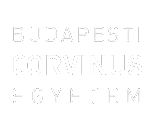Juhász, Péter (2017) Case studies in business research and teaching. Szakdolgozat, BCE Társadalomtudományi és Nemzetközi Kapcsolatok Kar, Idegennyelvi Oktató- és Kutatóközpont. Szabadon elérhető változat / Unrestricted version: http://publikaciok.lib.uni-corvinus.hu/publikus/szd/Juhasz_Peter.pdf
|
PDF
- Requires a PDF viewer such as GSview, Xpdf or Adobe Acrobat Reader
706kB |
Szabadon elérhető változat: http://publikaciok.lib.uni-corvinus.hu/publikus/szd/Juhasz_Peter.pdf
Absztrakt (kivonat)
The use of case studies in medicine dates back as early as 1600 BC when the Egyptians started to share observations and success of different kind of treatments. (Rison, 2016) This communication among colleagues sometimes living not only several thousand kilometres but also several centuries away has evolved from anecdotal notes to a standardised format that allows indexing, categorization, and rapid dissemination of knowledge to a broad medical audience. Today, case studies are one of the most popular tools and methods of both research and teaching business management. In teaching, case study method is an active pedagogical process as opposed to the passive process like lecturing. Naumes and Naumes (2012, p. 5.) underline that “students learn by performing various analyses and activities themselves, instead of being told how it is done”. Usually, learning by doing provides far better and more lasting results than learning through reading, lectures, or solving numerical examples. The term “case study” covers very different academic texts in the literature. It may refer both to research aimed and teaching (or classroom) cases, but the former is also addressed as “research case”, which is also often used for teaching purposes, e.g. in medicine. The solution for classroom cases usually prepared by students is often called “case analysis” or “case essay”, but the term case study also appears for this. The advantage of using cases is that those can develop and assess “the application of concepts to complex real world situations, including building analytic skills that distinguish high priority from low priority elements”. (Speaking of Teaching, 1994) Group work is also supporting students in developing interpersonal skills and the capacity to work in a team. (Cappel and Schwager, 2011) They also have to make connections between seemingly separate disciplines like ethics, accounting, finance, strategy, and marketing. Still, the way of preparing such scientific papers and educational aids is very rarely covered in PhD courses aiming to train future educators. This vital skill, though, can be learned and taught. This paper summarises key rules of writting and using case studies for teaching business and performing research in business administration, particularly in finance. 3 There are numerous articles and online resources about the basics of case study writing, though, most of those would offer a very superficial insight only. The majority of them lack clear definitions, process description or methodology; rather those offer a bunch of tips and tricks for “quick success”. (see also Zucker, 2009) As for the more scientific literature, three main directions can be identified that these articles may approach the problem: (1) writing case studies for teaching, (2) writing case studies for research papers, and (3) writing case studies and reports as a student. The structure of the thesis is as follows. First, Chapter 1 clarifies the meaning of the term “case study”, then Chapter 2 presents the characteristics of a good (business) case study. Chapter 3 focuses on the use of case studies in the research context, while Chapter 4 deals with the classroom environment application. This part also present a result of an online survey carried out among students and tutors of the Corvinus University of Budapest. The paper concludes with a summary. No thesis is the work of a single individual. I have to say thank you to my supervisor for her valuable advices and recommendations, and to my family for the great understanding they showed while me working at home instead of spending more time with them.
| Tétel típus: | Szakdolgozat |
|---|---|
| Témakör: | Oktatás |
| Azonosító kód: | 10340 |
| Képzés/szak: | Business language trainer |
| Elhelyezés dátuma: | 12 Jan 2018 09:18 |
| Utolsó változtatás: | 06 Dec 2021 10:49 |
Csak a repozitórium munkatársainak: tétel módosító lap

